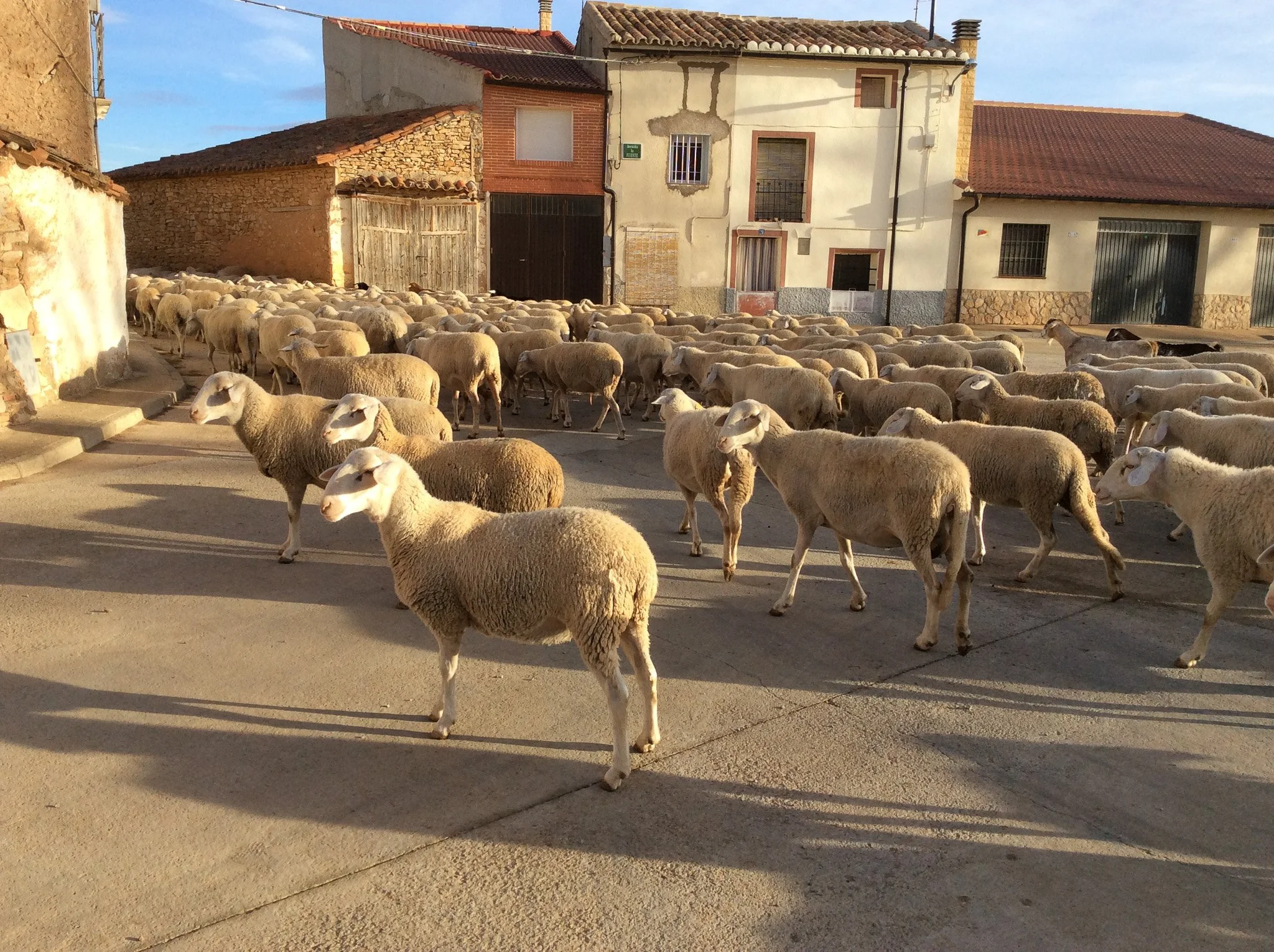Summer in Blancas
Summer always brings back childhood memories—biking with a friend to remote barrios, accompanying my mom to buy tobacco from farmers in distant fields. Now, in this quiet, isolated village, those moments resurface like echoes from the past.
Blancas, a small rural village in the Jiloca Comarca of Aragón, Spain, sits at 1,100 meters (3,600 feet) above sea level. Its continental climate brings scorching summers and harsh winters. Nestled in Teruel province, one of Spain’s most sparsely populated regions, Blancas is surrounded by vast landscapes, traditional farmlands, and historic villages that seem frozen in time.
A Village That Comes to Life in Summer
Though Blancas has a modest population of 135 residents, summer breathes new life into the village. During this season, the population can triple, reaching 300 to 400 people, as:
Former residents and their families return from the cities for the holidays.
Visitors and tourists explore the Jiloca Valley and its natural surroundings.
Festivals and local events, such as the patron saint celebrations, draw crowds and revive village traditions.
The Surrounding Landscape
The terrain around Blancas is a blend of open plains, rolling hills, and remnants of ancient farming terraces, shaped by centuries of agricultural life. The land is primarily dedicated to cereal farming, sheep grazing, and small fruit orchards, sustained by limited irrigation from the Jiloca River. These wide, open spaces, with their golden fields and distant mountain backdrops, give Blancas a rugged yet timeless beauty.
Red Soil & Sparse Vegetation – The terrain around Blancas is arid, with red clay soil that contrasts beautifully against the blue sky, especially at sunrise and sunset. Low shrubs, poplar groves, and almond trees add to the sparse but striking scenery.
Nearby Wetlands – Laguna de Gallocanta – Just 15 km northwest, Laguna de Gallocanta is Spain’s largest natural saline lake and a critical stopover for migrating cranes and other bird species. This wetland ecosystem adds a unique contrast to the otherwise dry surroundings.
Proximity to Monreal del Campo – The nearest town, Monreal del Campo (10 km away), serves as a local hub with more services, markets, and transport connections, including a train station linking to Zaragoza.
Isolated Yet Accessible – Blancas is located off the main highways, giving it a quiet, remote feel, yet it remains reachable via rural roads from the N-234 highway that connects Zaragoza to Teruel.
Exploring the Landscape
Taking the slow train from Zaragoza City offered me a broad view of the Teruel province landscape. As we passed through Cariñena, one of Aragón’s Denomination of Origin (DO) wine regions, the rolling vineyards and open fields stretched endlessly. The train continued south, stopping at Monreal del Campo, where I was picked up and taken to Blancas, a small, remote village seemingly tucked away from the world.
Hiking
Summers in this region are hot, but the temperature drops in the late afternoon. That’s why I recommend hiking early in the morning and finishing before noon. One day, we hiked from Blancas to Pozuel del Campo, the next village. The trail was unlike any I had experienced before—you could see it stretching out from afar, an uninterrupted path across the open, arid terrain.
Morning and Afternoon Walks
Some days, we walked to the main church, just outside the village. It’s a peaceful route, flanked by fields and lined with trees leading toward the church, making for a beautiful and calming walk. At times, we would go to Almond orchard.
Biking
Following the unmarked yet well-defined trails, I biked to the neighboring village of Bello, accompanied by Pippo, a lively German Shorthaired Pointer. This route led me right to Laguna de Gallocanta, popular for migratory birds stopping along their journey.
Laguna de Gallocanta
One of Aragón’s most significant natural landmarks, Laguna de Gallocanta is Spain’s largest saline lake and one of the most vital wetlands for birdlife in Europe. Located between Teruel and Zaragoza provinces, it serves as a crucial stopover for thousands of cranes and other migratory birds, making it a paradise for birdwatchers and nature lovers.
Livestock Farming
Sheep grazing is widespread, producing Ternasco de Aragón (a high-quality young lamb).
Extensive, free-range farming is still common, with sheep moving across the landscape seasonally.
Some areas support pig farming, contributing to Jamón de Teruel production.
Local Gastronomy
During these events, visitors can savor regional specialties such as the regañao, a traditional flatbread topped with Teruel ham or sardines and red peppers, commonly enjoyed during local festivals.
Ternasco de Aragón is one of my favorite. Sheep grazing is widespread here, with the region producing Ternasco de Aragón, a renowned young lamb.
A Simple Yet Rich Way of Life
The seniors play Petanca. Petanca (or pétanque in French) is a traditional game played with steel balls (boules), popular in Spain, France, and other Mediterranean countries. It is a form of boules sport where the objective is to throw heavy metal balls as close as possible to a small wooden target ball, called the cochonnet (French) or boliche (Spanish). in the afternoons. what a relaxing place to spend the summer. and tried coming here one summer by taking the train from Zaragoza and I really the route coming here.
Blancas has only a bar and that’s located in the main plaza and becomes the center of activities. Kids play tennis against the wall, food trucks as well as fruit trucks stop. The bar is also a place to order bread for the following day.
I also take a walk to the line of trees where you get a breeze that passes in the field and before the summer sets, locals walk to the field and chat around.


